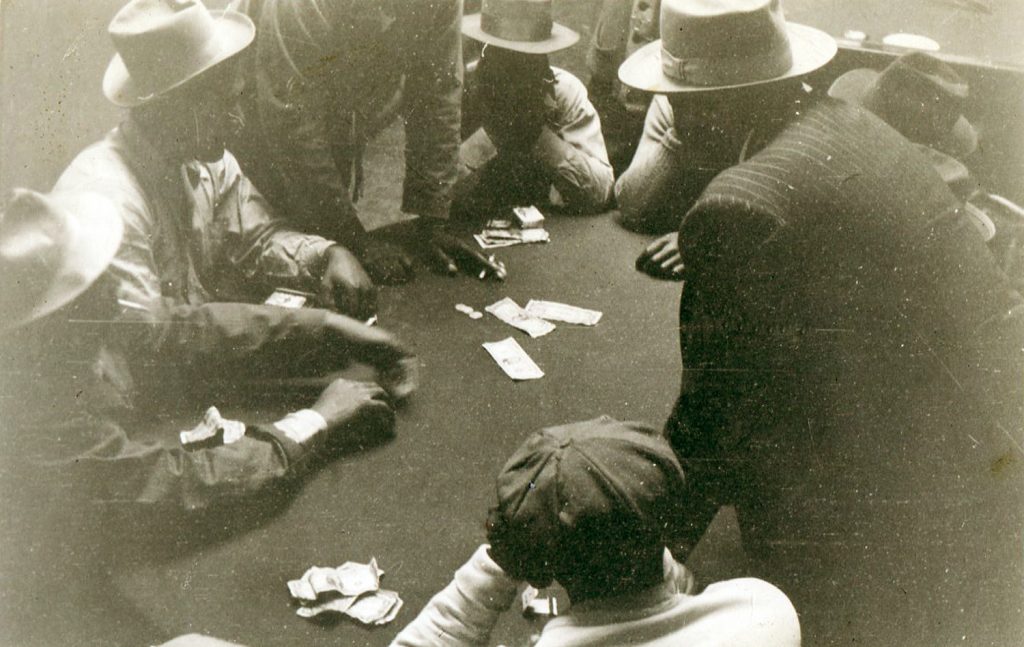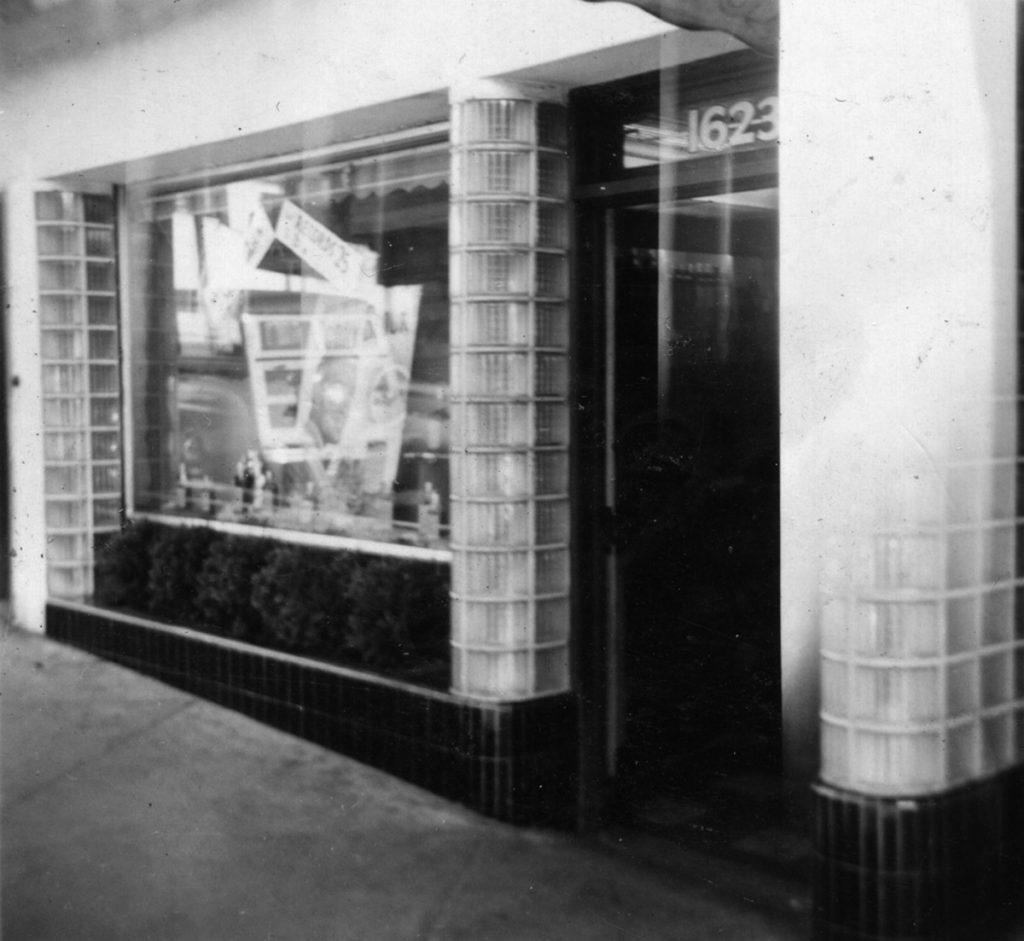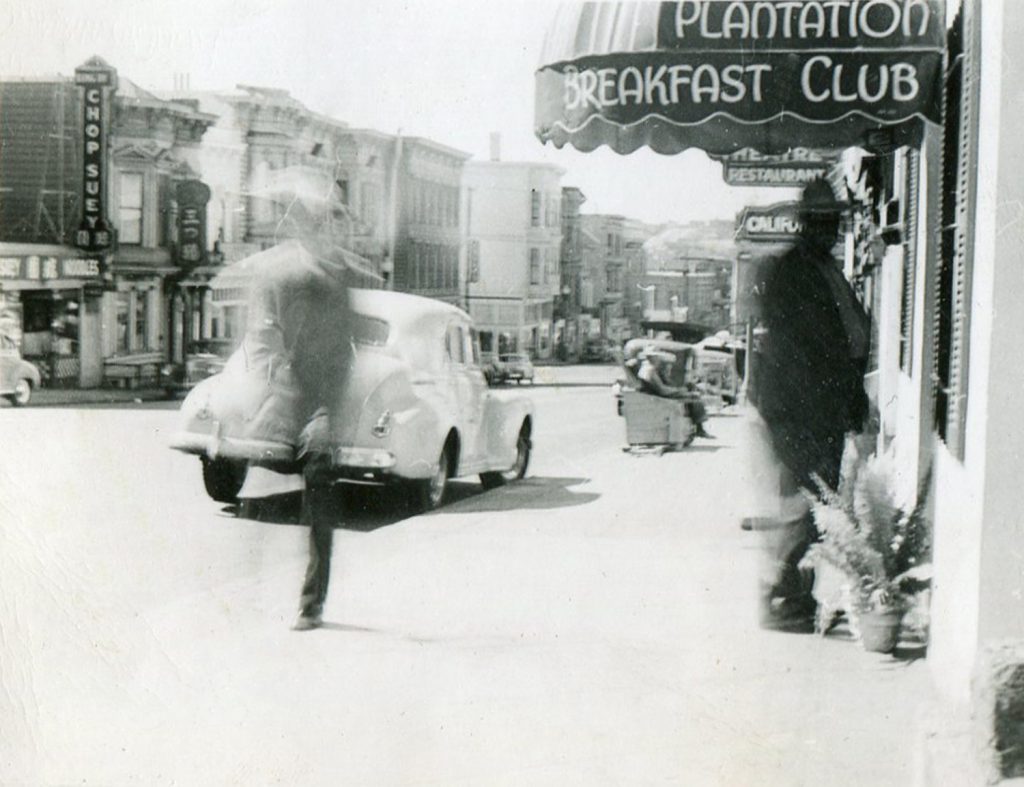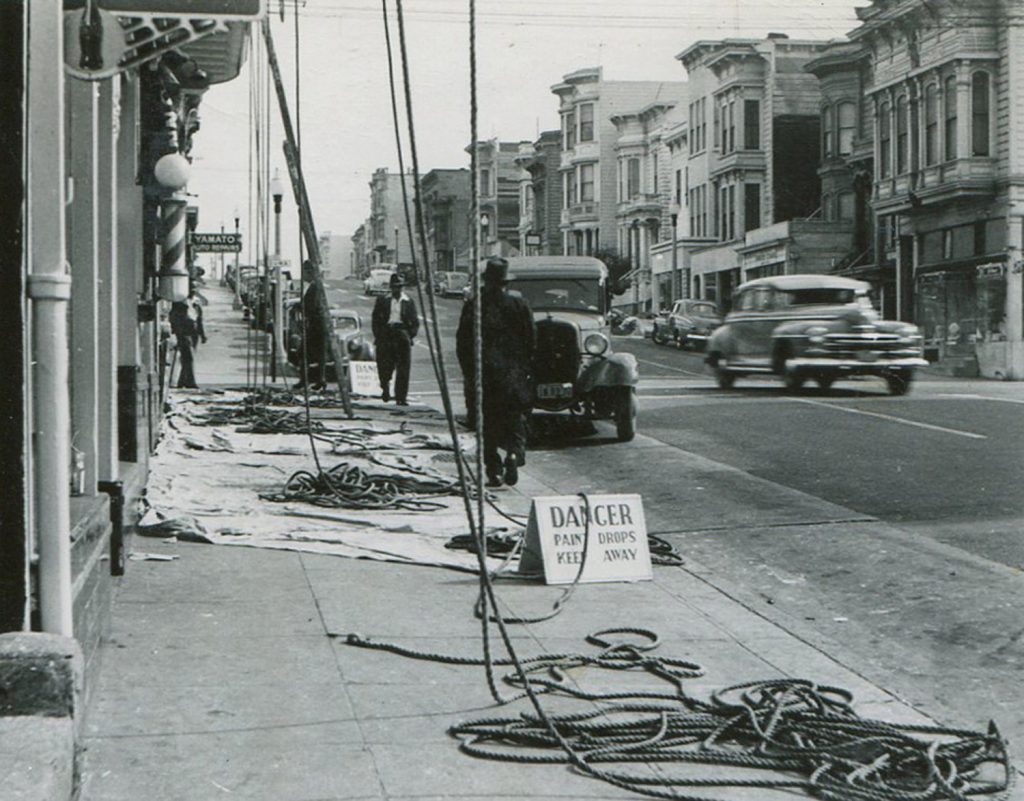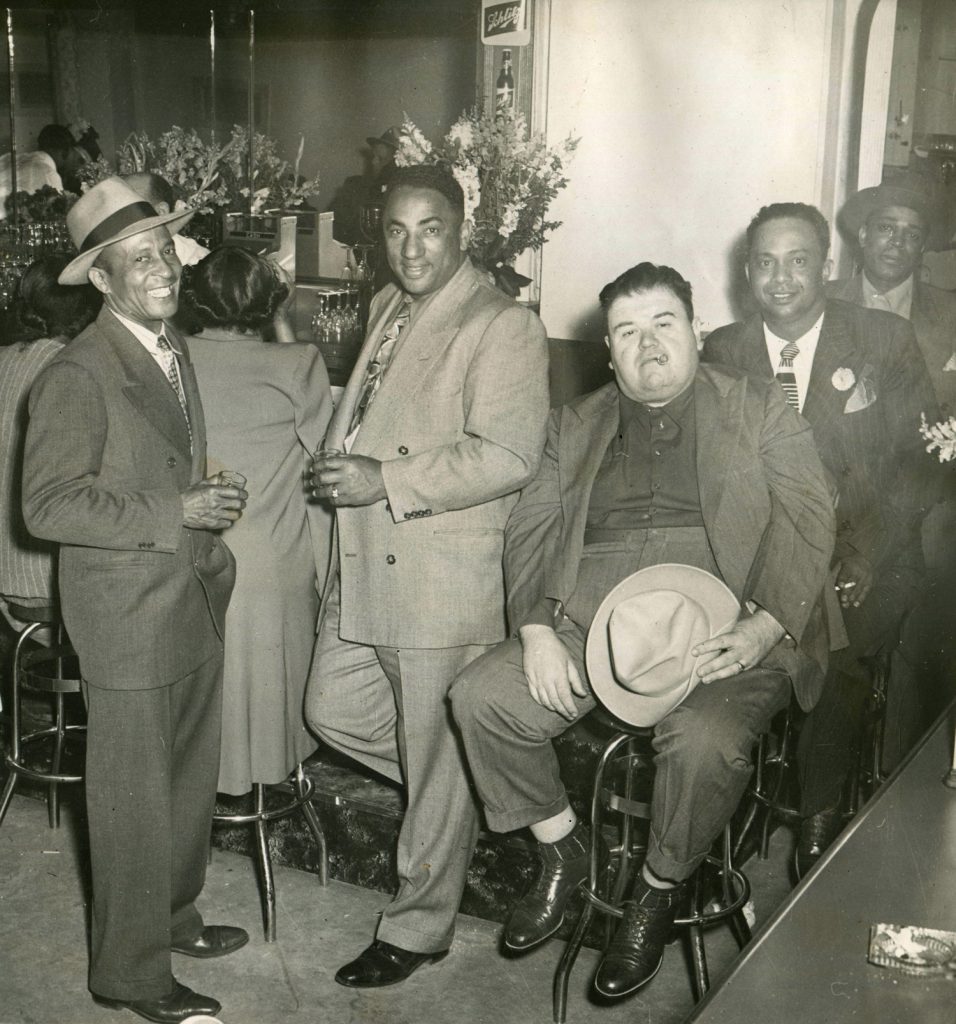
Charles Sullivan (center left, with Fats Corlett sitting beside him) in the Booker T. Washington Hotel at Fillmore and Ellis. Photograph courtesy of the Hall family.
LOCAL HISTORY | GARY CARR
On August 2, 1966, the “Mayor of Fillmore” was found shot to death in the area south of Market Street. He was sprawled on the street next to the open door of a rental car. A revolver lay beside his right hand. Police said it was a suicide.
The dead man was Charles Sullivan, the most influential — and controversial — figure in the mostly African-American Fillmore District. From the late 1940s until his death, Sullivan was probably the richest man in the neighborhood. He was tall, handsome and imposing, dressed in finely tailored suits worthy of Duke Ellington. A local merchants group bestowed his title on him, complete with an oversize key to the city.
The San Francisco coroner dismissed the idea of suicide, declaring the death of “unknown circumstances.” Also disagreeing with the initial police report is Harry Richard Hall, Charles Sullivan’s nephew and the creator of a new one-man show, Blues for Charles.
Blues for Charles is a murder mystery, and also Hall’s tribute to Charles Sullivan, his family and the Fillmore. But Hall would be the first to admit his uncle was no saint.
“Charles never would have committed suicide,” Hall says. “He was too selfish.”
Charles Sullivan was the epitome of the self-made man. He worked his way to the West Coast in the mid-1920s from his home in Alabama. The journey took him two years. In 1928, he ended up in Los Angeles where, after a series of menial jobs, he became a gofer in a machine shop and ended up a journeyman machinist.
“At best, Charles only had a sixth-grade education,” Hall says, “but he was a genius with numbers.”
As Hall’s new play makes clear, Sullivan was good with numbers in more ways than one.
He left Los Angeles for San Francisco in 1934 because the machinist union barred blacks. He found the union doors closed in the Bay Area, too, so he took a job as a chauffeur and mechanic for George Nicholls Jr., a Hollywood film editor and director of the popular 1934 film Anne of Green Gables, who was living in Hillsborough at the time. The job helped Sullivan meet people, and he was good at making friends. Or at least connections.
He cobbled together the money in 1938 to open a barbecue joint in San Mateo, naming it Sullivan’s. A year later, he brought his teenage sister, Gertrude, later playwright Harry Hall’s mother, out from Alabama to go to high school and work in the restaurant. He bought a bar near Pacifica, just so he could get the liquor license.
“In those days, you could transfer a license to another location,” Hall explains.
After this maneuver, Sullivan’s BBQ had a bar and became Club Sullivan. It also had a card room in the back; Sullivan was the first black man on the Peninsula to own a gambling license. He was on his way up.
Because Sullivan was good with machines and loved music, he got into the jukebox business, which he named Sullivan’s Music Co. Booking live acts followed, and by the mid-1940s, he had grown to be the most successful music promoter on the West Coast.
Sullivan moved into the Fillmore and hooked up with one of the Bay Area’s more colorful characters, a large man named Shirley “Fats” Corlett. Fats had come into possession of the Edison Hotel at 1540 Ellis Street and renamed it the Booker T. Washington Hotel, but because of a felony conviction he couldn’t own the bar. Sullivan saw an opportunity and bought the hotel, as well as the Post Street Liquor Store nearby at 1623 Post. The Post Street building had rooms for rent on the second floor, and that became the Sullivan Hotel.
Sullivan booked some of the biggest names in jazz — including Louis Armstrong, Lionel Hampton, Ruth Brown, Billie Holiday, Charlie Parker and Slim Galliard — into his own and other Bay Area venues. Galliard was a unique entertainer — a singer, songwriter, master of many instruments and inventor of his own language, which he called Vout.
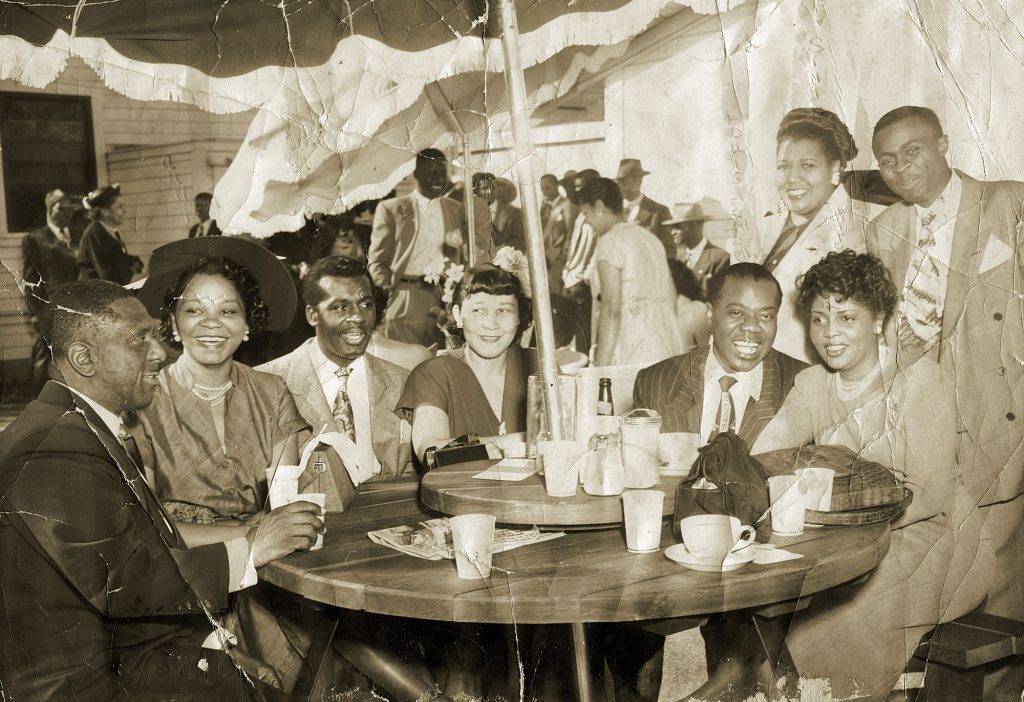
At a party in the Fillmore in the 1940s, jazz great Louis Armstrong (seated second from right with his wife, Lucille) was joined by locals including Gertrude Hall (center), Charles Sullivans’s sister and the mother of playwright Harry Hall. Photo courtesy of the Hall family.
Galliard borrowed money from Sullivan to buy a chicken and waffles place on Post Street, which he called Vout City. When the place went bust, Sullivan sued Galliard and won control.
“Not only was my uncle good with numbers,” Hall says “He was a tough man with a lawsuit, too.”
Sullivan was also a man of great perseverance, eventually becoming the first African-American in the Bay Area to belong to the machinist union. When black people began arriving to work in the shipyards in Oakland and Hunter’s Point during World War II, Sullivan was already there.
The machinist-jukebox entrepreneur-night club owner-promoter already owned one of the most successful jazz clubs in the Fillmore, the Booker T. Washington Lounge. He added Galliard’s place, which turned into an even more successful after-hours music venue, the legendary Jimbo’s Bop City. The building that housed Jimbo’s was later moved from Post Street when the Fillmore District was largely wiped out by the Redevelopment Agency and became home of the late and lamented Marcus Book Store.
Sullivan also owned the master lease to the Fillmore Auditorium. In 1965, he began subletting the Fillmore to Bill Graham when he wasn’t using the venue himself for blockbusters like the Ike and Tina Turner Revue.
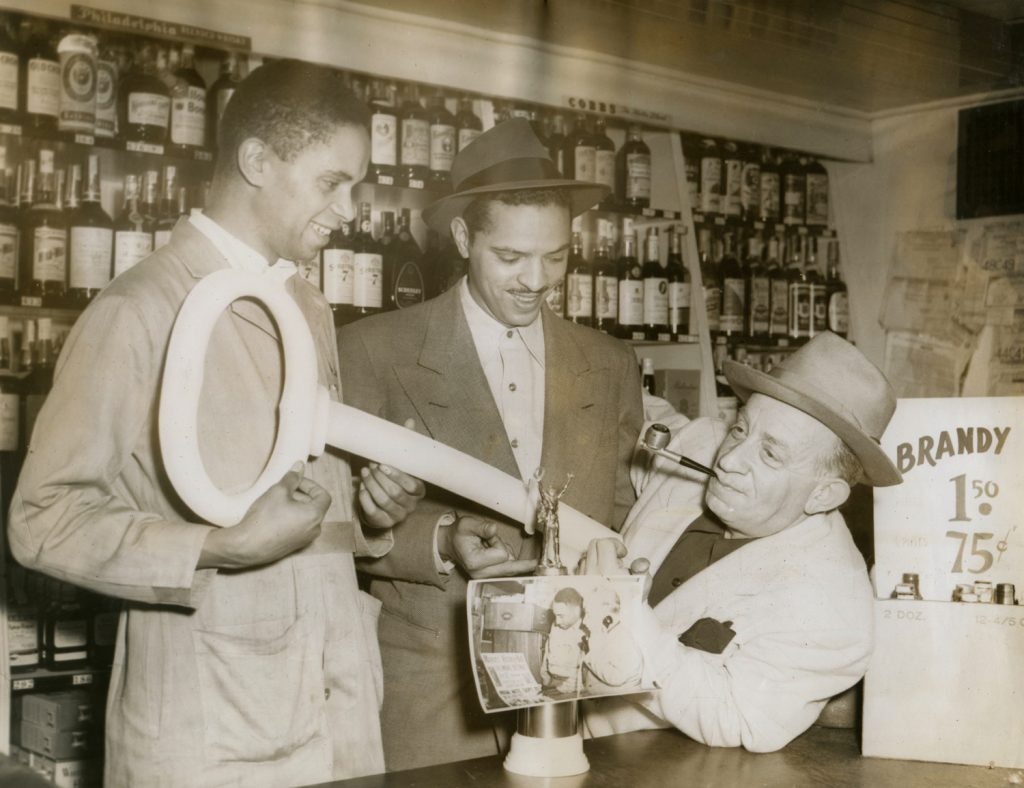
Charles Sullivan also owned the Post Street Liquor Co., which was run by his brother-in-law George Hall (center, with Sullivan’s key to the city). Photograph courtesy of the Hall family.
On August 1, 1966, Sullivan flew back to San Francisco from L.A., where he had promoted a James Brown concert at the War Memorial Theater. Sometime between midnight and 2 a.m., Sullivan’s body was discovered on Bluxome Street in the industrial district south of Market. According to the police report, he was between his rental car and the building, “lying where a sidewalk would be if there was one.” He had been shot once at close range “one inch to the right of the left nipple.” He was 57 years old.
The police estimated the time of death at midnight and called it a suicide. The coroner said it happened at 2 a.m. and ruled out suicide. Acquaintances of Sullivan said that, at midnight, he was still at a woman’s house in Oakland. Rumors spread that it was a mob hit. Soon afterward, Bill Graham took over booking acts into the Fillmore.
Harry Hall has his own theory of what happened to his uncle Charles. But Blues for Charles remains a murder mystery — and a tribute to a talented and powerful, if flawed, man.
Hall sums it up this way: “I’ve worked on this play for four years, and in the end, all I really want to do is free the family ghosts, and sing the blues for Charles.”
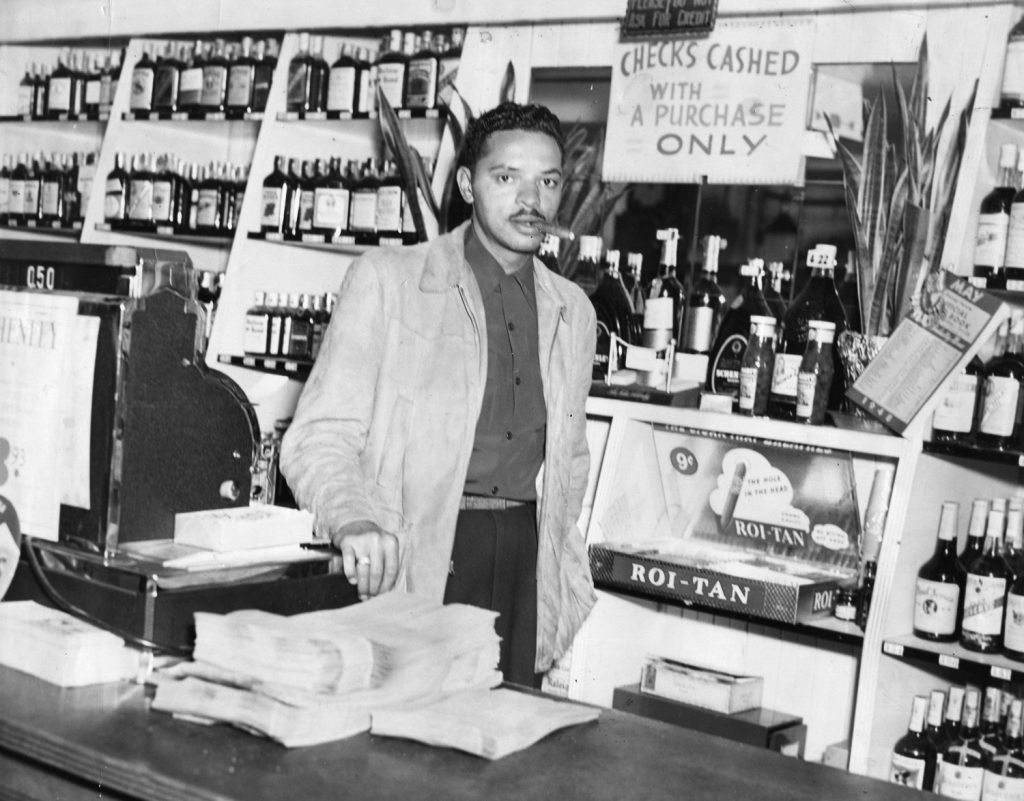
George Hall, Charles Sullivan’s brother-in-law, inside the Post Street Liquor Store. Photograph courtesy of the Hall family.
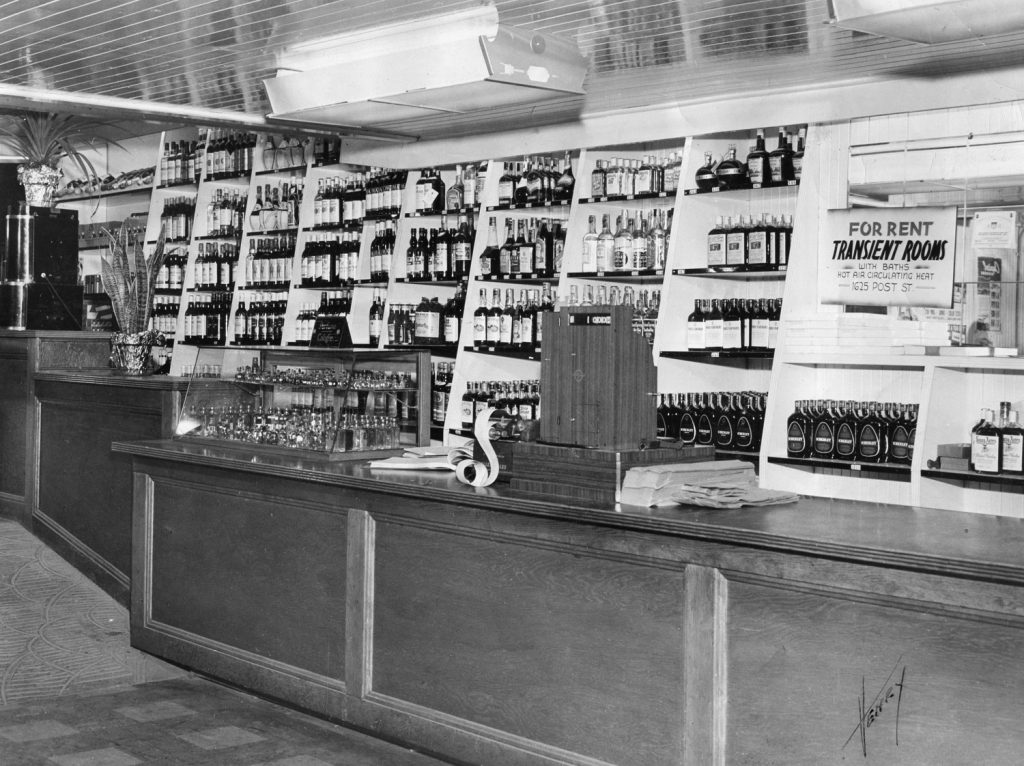
Interior of Post Street Liquors. Sign advertises rooms for rent upstairs in the Sullivan Hotel. Photograph courtesy of the Hall family.
Filed under: Neighborhood History




